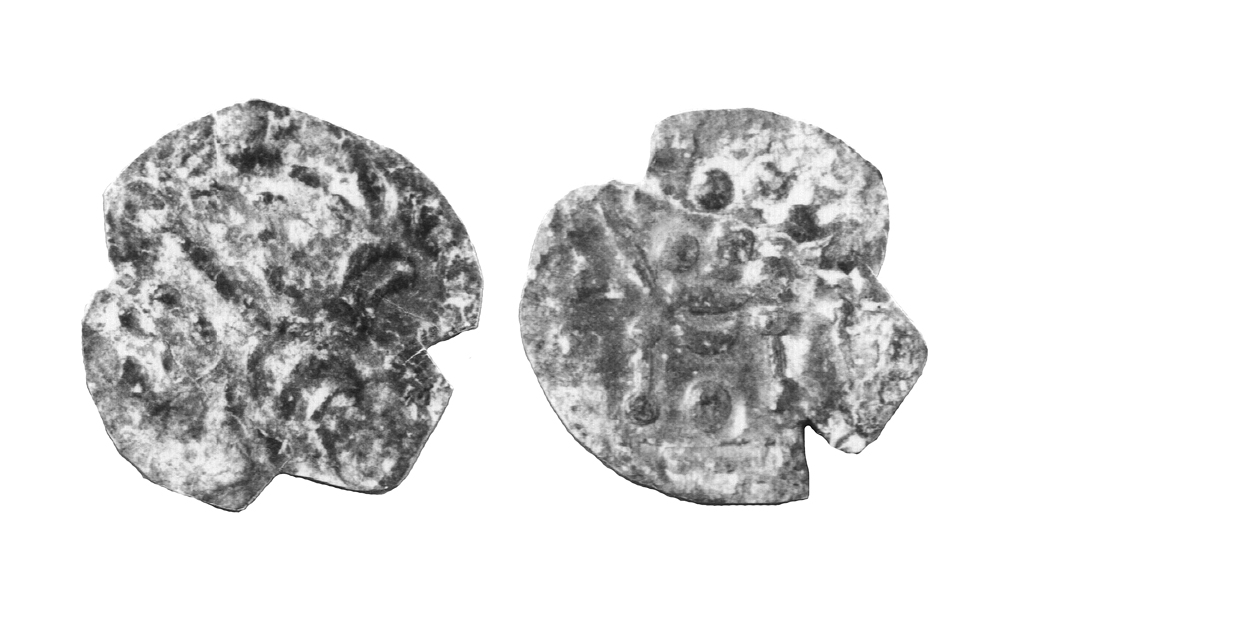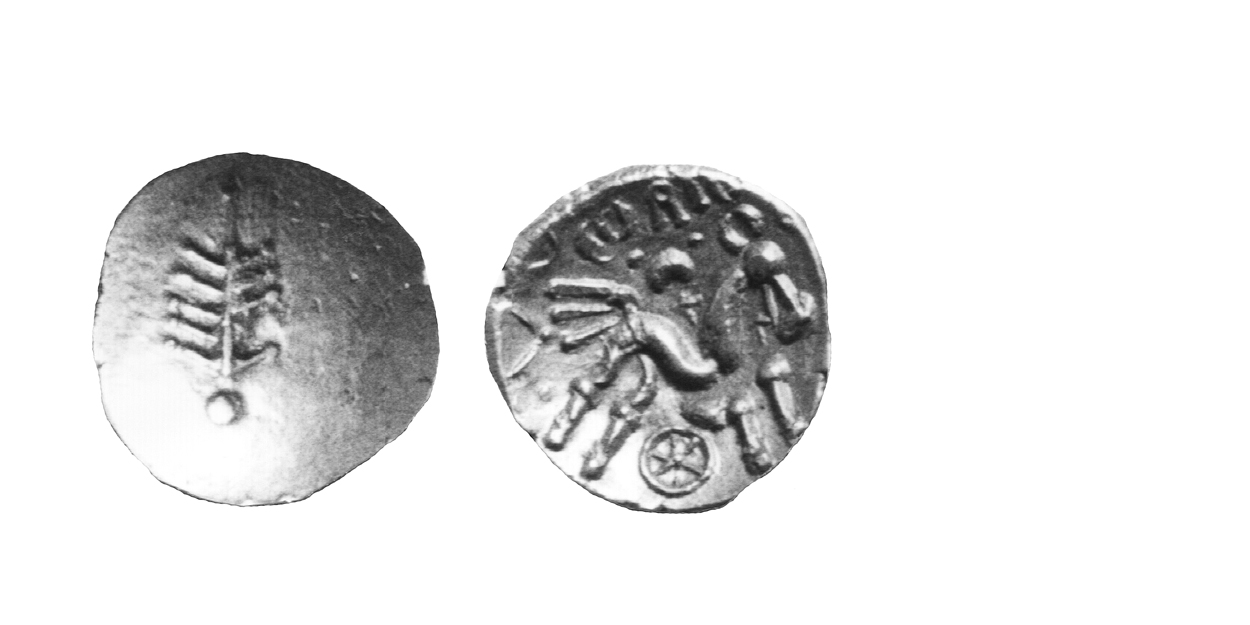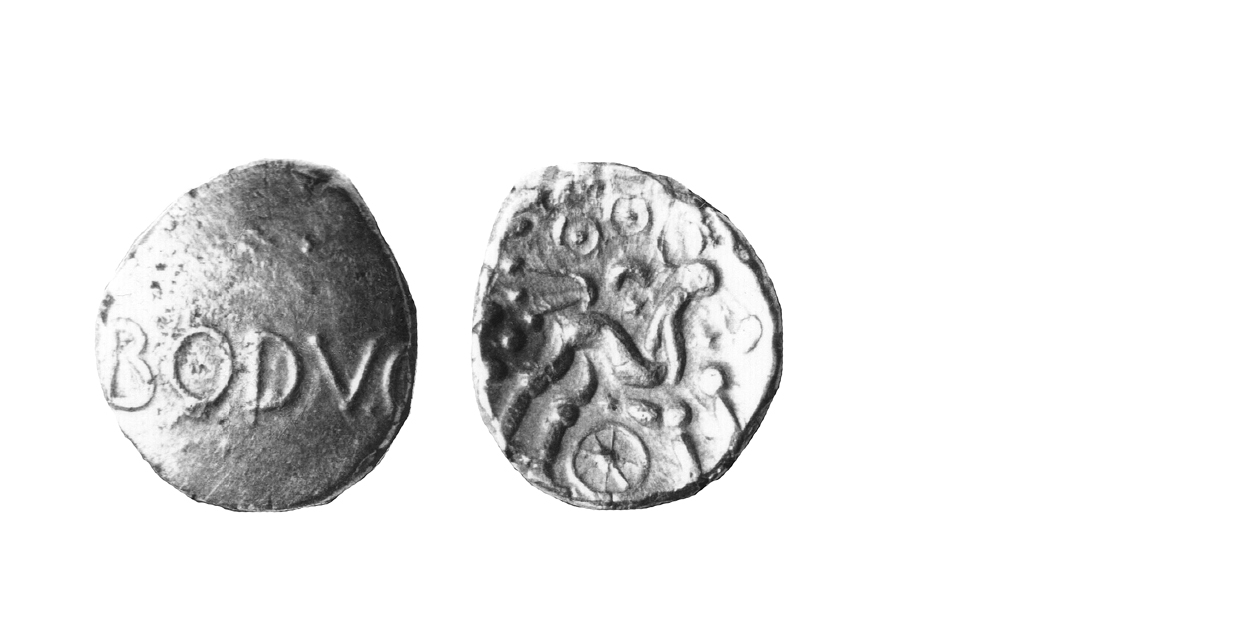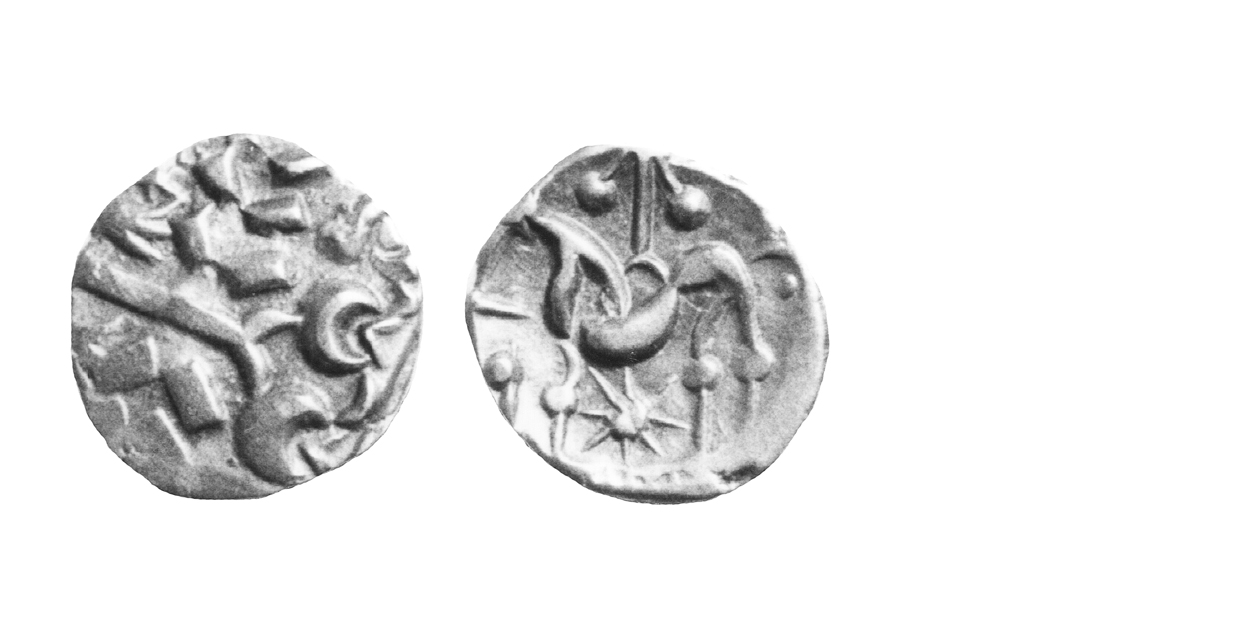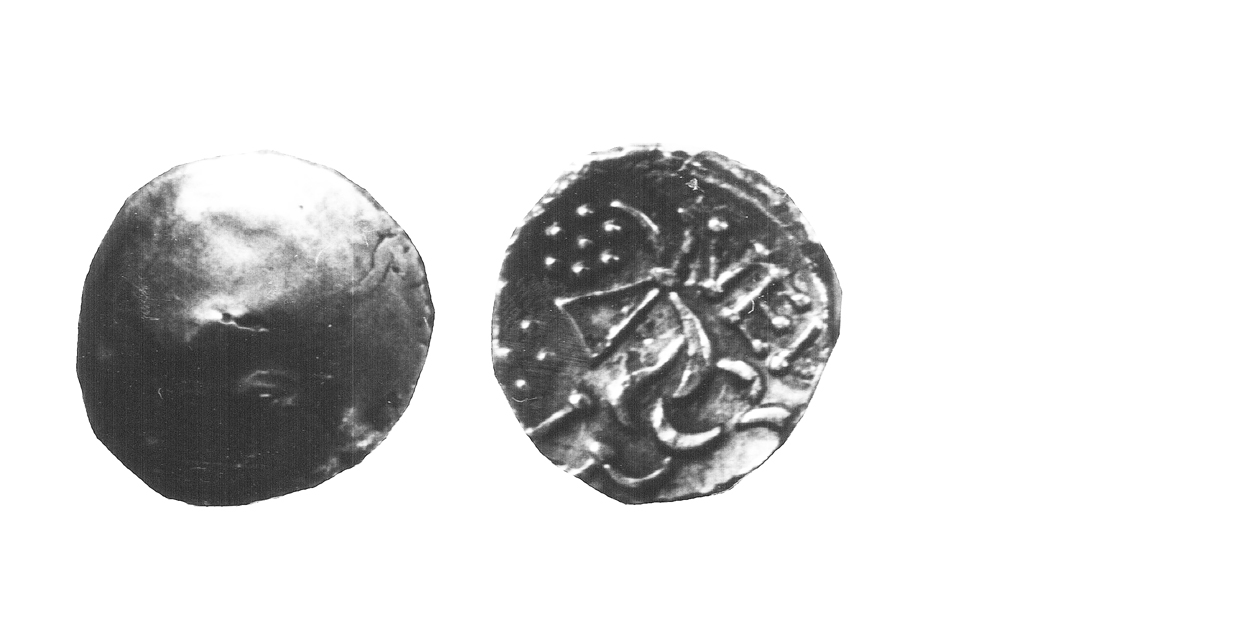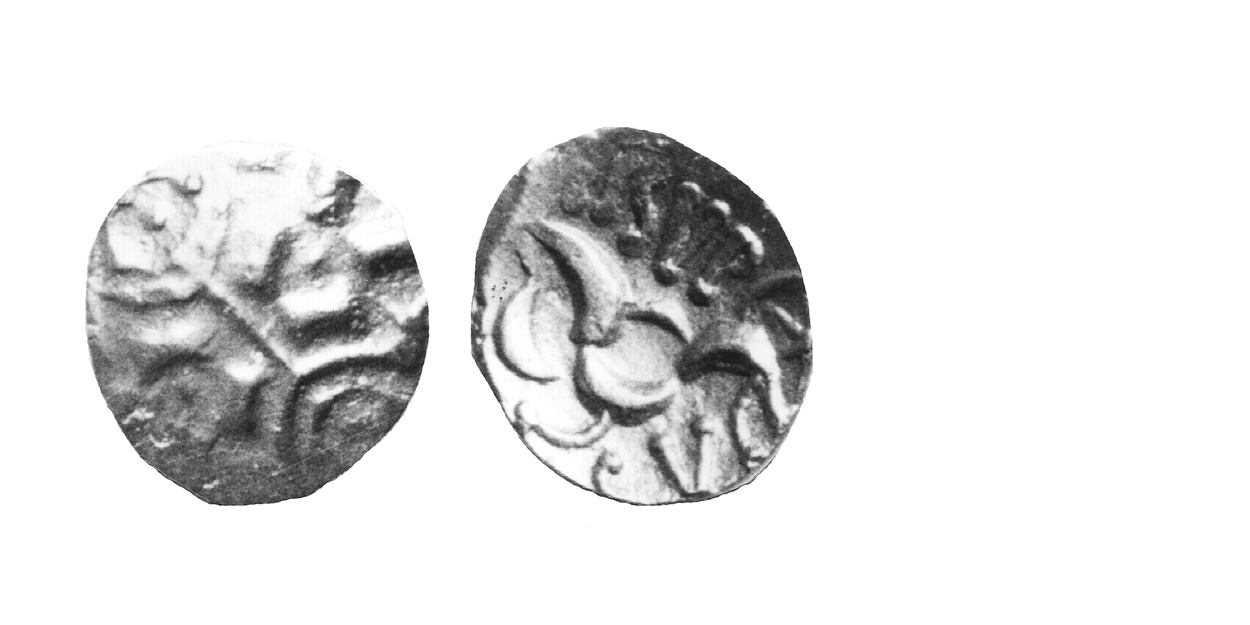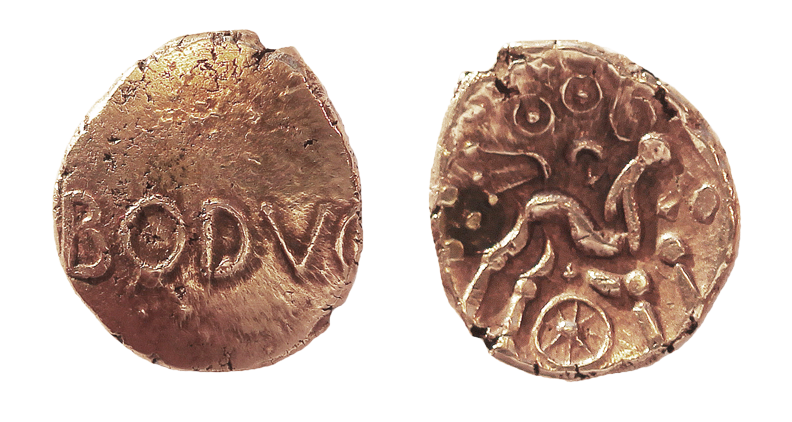
History
Early Dynastic Coinages (Info)
Coinage in the Region of the Peripheral Tribes 30-1 B.C.
Durotriges
The Durotriges virtually disappear from the numismatic scene by 30 B.C. They had suspended all gold and silver coinage by this date and continued with only a series of struck bronze coins. These bronzes mimicked the earlier silver staters, but were poorly-made and became increasingly crude as time went on.
Dobunni
The Dobunni continued to issue silver coins throughout the rest of the century, but there is some question whether they struck gold continuously. The uninscribed gold coins are known today in only a handful of specimens. However, the silver issues are relatively plentiful, with a long succession of types. By 30 B.C. staters inscribed with the name CORIO appeared, replaced around 15 B.C. by those inscribed BODVOC.
Corieltauvi
The Corieltauvi continued to issue the South Ferriby Types up to 10 B.C., changing the privy marks on the reverses in a sophisticated manner. The progression of these marks has not yet been fully determined. About 10 B.C., the tribe added the inscription VEP to the South Ferriby Type staters.
Ian Leins (157) now suggests that the Coins incribed IISVPRASV are also among the earliest of the inscribed types, perhaps contemporary with the VEP staters.
A major study of Corieltauvian coinage, conducted by Geoff Cottam awaits publication – this may revise our view in the future.
Summary
Thus by 10 B.C., seven tribal authorities throughout Britgain were striking coins. All except the Durotrigan and Icenian issues carried inscriptions. These coinages were largely local ones and did not circulate beyond the tribal areas for the most part (72). The one significant exception to this was the coinage of the Trinovantes/Catuvellauni, the tribe which benefited from Roman sponsorship.
As the millennium drew to a close, Tasciovanus either died or lost his throne, causing turmoil throughout southeastern Britain. The ensuing events are chronicled in a shadowy manner by the coins of the "Interregnum".
Next Section – "The Interregnum"

